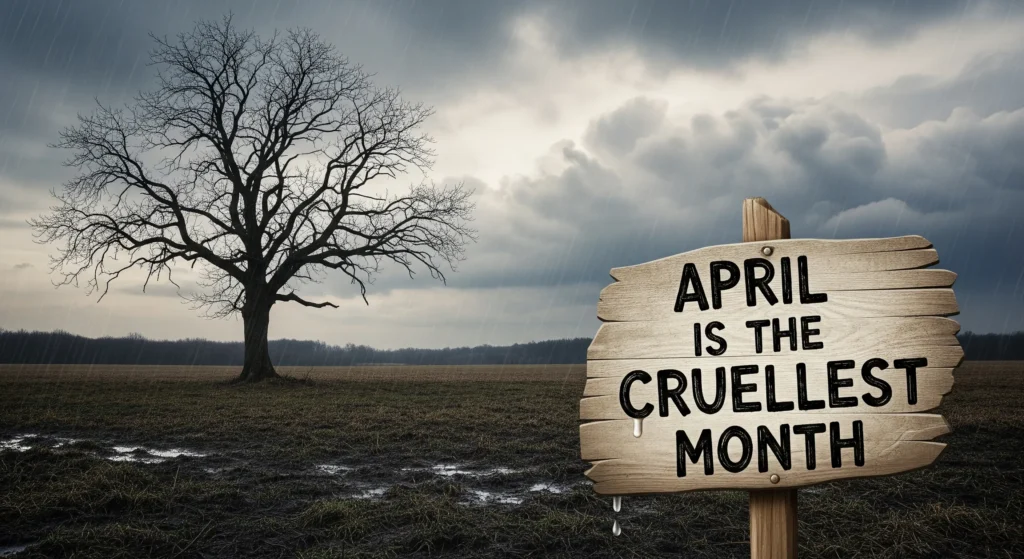
I wrote this guide to show, in simple steps, how personification works and how you can use it right away. I start with a clear meaning, then give 90+ examples—short and long—pulled from poems, books, plays, and films, plus sets made for teachers, students, kids, and adults. I also point to other figures of speech you’ll see beside personification, and I add a small section of nature similes so you can compare styles. I finish with themed lists—emotions, food, life, and death—so you can lift lines, teach a quick lesson, or spark your own writing without hunting anywhere else.
What is a Personification ?
Personification is giving human actions or feelings to non-human things or ideas. Writers use it to make abstract or natural things feel vivid, close, and easy to imagine.
how many more figure of speech like Personification ?
Besides personification, common figures include metaphor, simile, hyperbole, idiom, irony, oxymoron, pun, litotes, alliteration, assonance, onomatopoeia, allusion, and symbolism. Each one changes meaning or sound in a different way, and teachers often mix several in the same text for effect.
What are the Most Common Personification Examples?
The most common personification examples make Death, Time, seasons, and nature act like people.
They stick because we already treat these forces as agents in daily talk, so the lines feel natural and strong.
- Death as a polite caller — “Because I could not stop for Death— / He kindly stopped for me.” — Emily Dickinson, “Because I could not stop for Death—” (c.1863).
- Time as a master — “Love’s not Time’s fool.” — William Shakespeare, Sonnet 116 (1609).
- Sea with a body — “The Sea that bares her bosom to the moon.” — William Wordsworth, “The World Is Too Much with Us” (1807).
- Fog with paws — “The fog comes on little cat feet.” — Carl Sandburg, “Fog” (1916).
- Month with mood — “April is the cruellest month.” — T. S. Eliot, “The Waste Land” (1922).

A steady way to move forward is to vary the “agent”: switch between time, weather, places, and ideas so your examples stay fresh.
What are the Uncommon Personification Examples?
Uncommon personification leans on bold verbs and surprising agents.
It makes storms, virtues, and stars behave with will and choice.
- Storm as a tyrant — “The storm-blast came, and he was tyrannous and strong.” — S. T. Coleridge, “The Rime of the Ancient Mariner” (1798).
- Autumn as a friend — “Season of mists and mellow fruitfulness, Close bosom-friend of the maturing sun.” — John Keats, “To Autumn” (1819).
- Stars that hide — “Stars, hide your fires.” — Shakespeare, Macbeth (c.1606), I.4.
- Ambition that mocks — “Let not Ambition mock their useful toil.” — Thomas Gray, “Elegy Written in a Country Churchyard” (1751).
- Hope with a body — “Hope is the thing with feathers.” — Emily Dickinson, “ ‘Hope’ is the thing with feathers— ” (c.1861).
Unusual agents wake readers; place one daring line after steady, simpler ones to keep rhythm and clarity.
What are the long Personification examples?
Long personifications extend across several lines and build a full scene.
They feel like mini-stories where the non-human truly “acts.”
- West Wind addressed as power and spirit — “O wild West Wind, thou breath of Autumn’s being… / …Drive my dead thoughts over the universe like wither’d leaves.” — P. B. Shelley, “Ode to the West Wind” (1819).
- Death as carriage driver (whole stanza) — The full coach-ride with Death and Immortality — Dickinson, “Because I could not stop for Death—” (c.1863).
- Storm as a hunting force — The long pursuit scene of the storm — Coleridge, “Ancient Mariner” (1798), Part I.
- City with human vices — London “charter’d” and “marks of weakness, marks of woe” — William Blake, “London” (1794).
- Time as sculptor and devourer — “Like as the waves make towards the pebbled shore…” (minutes “hurry”) — Shakespeare, Sonnet 60 (1609).
When you need length, keep one human trait consistent (voice, will, or touch) so the image stays coherent.
What are the short Personification examples?
Short personifications hit fast with one vivid human trait.
They work best in titles, captions, and topic sentences.
- “Night’s candles are burnt out.” — Shakespeare, Romeo and Juliet (c.1595), III.5.
- “Time’s wingèd chariot” hurries — Andrew Marvell, “To His Coy Mistress” (c.1650s).
- “The yellow fog… rubs its back upon the window-panes.” — T. S. Eliot, “Prufrock” (1915).
- “Care-charmer Sleep” — Samuel Daniel, Delia (1592).
- “The heart asks pleasure first.” — Emily Dickinson (c.1860s).
Use these as models for your own one-liners in essays and headings.
What are the Personification examples in Literature?
Good literary personification often touches nature, fate, and ideas.
Classics keep it clear, compact, and musical.
- Time as judge — “Love’s not Time’s fool.” — Shakespeare, Sonnet 116 (1609).
- Sea as a woman — “He always thought of the sea as la mar… as feminine.” — Ernest Hemingway, The Old Man and the Sea (1952).
- Bank as a monster — “The bank-monster has to have profits all the time.” — John Steinbeck, The Grapes of Wrath (1939).
- Fire as eater — Fire “devours” and “licks” through books and rooms — Ray Bradbury, Fahrenheit 451 (1953).
- Hunger as a prowler — “Hunger was an active, living thing.” — Charles Dickens, A Tale of Two Cities (1859), Book I.
Move from abstract (Time) to concrete (fire, hunger) to cover wide reading tastes in one section.
What are the Personification examples in Poem?
Poems often give weather and months a human will.
They also turn Hope, Love, and Sleep into actors.
- Fog as a cat — “The fog comes on little cat feet.” — Sandburg, “Fog” (1916).
- April with cruelty — “April is the cruellest month.” — Eliot, “The Waste Land” (1922).
- Autumn befriending Sun — “Close bosom-friend of the maturing sun.” — Keats, “To Autumn” (1819).
- Sleep as comforter — “Care-charmer Sleep.” — Samuel Daniel, Delia (1592).
- Hope as a bird — “ ‘Hope’ is the thing with feathers— ” — Dickinson (c.1861).
These lines make easy classroom anchors: they’re short, quotable, and varied.
What are the Personification examples in Poetry?
Twentieth-century poetry loves city and weather as people.
It leans on tactile verbs like rub, kiss, and creep.
- Fog that rubs its back — Eliot, “Prufrock” (1915).
- Rain that kisses — “Let the rain kiss you.” — Langston Hughes, “April Rain Song” (1921).
- Wind that batters a house — “This house has been far-out at sea all night.” — Ted Hughes, “Wind” (1957).
- City that marks faces — Blake, “London” (1794).
- Sun that “moves” the world awake — implied agency across pastoral lyrics — Various; see Wordsworth’s nature sonnets (1800–1807).

Point students to the verb choice: the person’s action word is the hinge.
What are the Personification examples in Films?
Films often personify concepts by giving them literal bodies.
That makes themes visible for viewers of all ages.
- Death as a chess player — Ingmar Bergman, The Seventh Seal (1957).
- Joy, Sadness, Fear as people — Pete Docter, Inside Out (2015).
- Talking household objects — Disney, Beauty and the Beast (1991).
- Cars with faces and goals — John Lasseter, Cars (2006).
- A volleyball as a friend (“Wilson”) — Robert Zemeckis, Cast Away (2000).
Use one of these as a warm-up before reading poems on the same theme.
What are the Personification examples in Books?
Novels personify forces like sea, banks, fire, and hunger to show power.
These lines help readers feel systems, not just see them.
- Sea as woman — Hemingway, The Old Man and the Sea (1952).
- Bank as monster — Steinbeck, The Grapes of Wrath (1939).
- Fire as living eater — Bradbury, Fahrenheit 451 (1953).
- Hunger as prowler — Dickens, A Tale of Two Cities (1859).
- Nature as teacher and scold — throughout Hard Times and Bleak House — Dickens (1854; 1853).
Shift from environment (sea) to system (bank) to keep a sharp teaching arc.
What are the Personification examples in Drama?
Plays turn ideas into speaking presences to heighten action.
Shakespeare is rich with Time, Fortune, and Night acting like people.
- Life as a “walking shadow” — Shakespeare, Macbeth (c.1606), V.5.
- Night’s candles (stars) go out — Shakespeare, Romeo and Juliet (c.1595), III.5.
- Danger knows itself — “Danger knows full well / That Caesar is more dangerous than he.” — Shakespeare, Julius Caesar (1599), II.2.
- Fortune turns her wheel — Shakespeare, King Lear (1606), II.2.
- Time scythes all — “Nothing ’gainst Time’s scythe can make defence.” — Shakespeare, Sonnet 12 (1609).
After quoting, ask: what human trait is implied—choice, voice, or touch?
What are the Personification examples for Teachers
Use short, high-utility lines that fit slides and quick checks.
Each sample below is public-domain and easy to memorize.
- “The Sea that bares her bosom to the moon.” — Wordsworth (1807).
- “April is the cruellest month.” — Eliot (1922).
- “Night’s candles are burnt out.” — Shakespeare, R&J (c.1595).
- “Hope is the thing with feathers.” — Dickinson (c.1861).
- “The fog comes on little cat feet.” — Sandburg (1916).
Move from nature → time → idea to model range in one mini-lesson.
What are the Personification examples for Students?
Pick lines with clear agents and concrete verbs.
These help students imitate the pattern in their own writing.
- Wind “hunts” the house — Ted Hughes, “Wind” (1957).
- Rain “kisses” skin — Langston Hughes, “April Rain Song” (1921).
- Time “hurries” near — Marvell, “To His Coy Mistress” (c.1650s).
- Death “stops” for the speaker — Dickinson (c.1863).
- Fortune “smiles” and “turns” — Shakespeare, King Lear (1606).
Invite students to swap the agent and the verb to make five fresh lines.
What are the Personification examples for kids
Children’s stories often make objects and treats talk or travel.
These tales are simple and memorable for first lessons.
- A cookie that runs and talks — “The Gingerbread Man” (English folktale, 19th c.).
- A pancake that escapes — “Pannekaken / The Pancake” (Norwegian folktale; Asbjørnsen & Moe, 19th c.).
- Oysters that chat — Lewis Carroll, “The Walrus and the Carpenter” (1871).
- A giant peach that carries friends — Roald Dahl, James and the Giant Peach (1961).
- A magic pot that obeys — Brothers Grimm, “Sweet Porridge” (1812).
Start with a folktale, then show a two-line poem so kids see both prose and verse uses.
What are the Personification examples for Adults?
Adult texts often personify systems and abstractions.
They help us picture power, fate, and loss.
- Bank as monster — Steinbeck, The Grapes of Wrath (1939).
- Sea as feminine partner — Hemingway, The Old Man and the Sea (1952).
- Time as judge and scythe — Shakespeare, Sonnets 12 & 116 (1609).
- Death as caller — Dickinson (c.1863).
- April as cruel — Eliot (1922).
Use these to spark discussion about how language shapes social feeling.
What are the creative Personification examples?
Creative personifications push verbs and pair unlikely agents.
These published lines show risk with control.
- Wind as musician — “O wild West Wind, thou breath…” — Shelley (1819).
- Sleep as thief of care — Samuel Daniel, “Care-charmer Sleep” (1592).
- City that brands faces — Blake, “London” (1794).
- Fire that licks and devours — Bradbury, Fahrenheit 451 (1953).
Try combining a tender verb (“kiss”) with a harsh agent (“winter”) to get a fresh tension.
What are the Critical Personification examples?
Critics often discuss “pathetic fallacy,” a kind of personification for emotion in nature.
These texts are central in classrooms.
- Ruskin’s term “pathetic fallacy” — John Ruskin, Modern Painters, Vol. 3 (1856).
- Eliot’s “April is the cruellest month” as case study — Eliot (1922).
- Keats’s “To Autumn” as a debated gentle fallacy — Keats (1819).
- Blake’s “London” where the city “marks” faces — Blake (1794).
- Dickens’s “Hunger” passage — Dickens, A Tale of Two Cities (1859).
After naming the device, ask if the feeling fits the scene or fights it.
What are the similes examples about nature?
The most taught nature similes compare sky, moon, or self to simple objects.
They are clear, musical, and easy to imitate.
- “I wandered lonely as a cloud.” — Wordsworth, “I Wandered Lonely as a Cloud” (1807).
- “She walks in beauty, like the night.” — Lord Byron (1814).
- “The moon was a ghostly galleon tossed upon cloudy seas.” — Alfred Noyes, “The Highwayman” (1906).
- “And, like a thunderbolt, he falls.” — Alfred Tennyson, “The Eagle” (1851).
- “My love is like a red, red rose.” — Robert Burns (1794).
Use one simile to set tone, then personify the same scene to deepen it.
What are the Personification examples about emotions ?
Emotions become characters when they warn, mock, or comfort.
These personifications about emotions turn feelings into agents with voice and will.
- Jealousy as a monster — “O, beware, my lord, of jealousy; / It is the green-eyed monster.” — Shakespeare, Othello (c.1603), III.3.
- Hope as a bird — Dickinson (c.1861).
- Melancholy addressed as presence — Keats, “Ode on Melancholy” (1819).
- Despair as a tempter — Edmund Spenser, The Faerie Queene, I.9 (1590).
- Love as a smoke — “Love is a smoke raised with the fume of sighs.” — Shakespeare, Romeo and Juliet (c.1595), I.1.
Place an “emotion as agent” line near a scene of conflict to tie theme to plot.
What are the Personification examples about food?
Folk and children’s tales often make food talk, run, or obey.
They are perfect for early lessons and read-alouds.
- Cookie that runs — “The Gingerbread Man” (English folktale, 19th c.).
- Pancake that speaks — “Pannekaken / The Pancake” (Norwegian folktale; Asbjørnsen & Moe, 19th c.).
- Oysters that chat — Carroll, “The Walrus and the Carpenter” (1871).
- Magic pot that obeys — Grimm, “Sweet Porridge” (1812).
- Giant peach that carries travellers — Dahl, James and the Giant Peach (1961).
After a playful example, switch to a serious one (e.g., hunger in Dickens) for contrast.
What are the Personification examples about life?
Writers personify life to question meaning and fate.
The device helps them argue without preaching.
- Life as a “walking shadow” — Shakespeare, Macbeth (c.1606), V.5.
- Life as a loaded gun — Emily Dickinson, “My Life had stood— a Loaded Gun—” (c.1862).
- Road that “wanted wear” — Robert Frost, “The Road Not Taken” (1916).
- Time shaping our days — Shakespeare, Sonnet 60 (1609).
Let students test which trait is human in each line: will, speech, or intent.
What are the Personification examples about death?
Death is the most personified force in literature.
It appears as a driver, a proud foe, or a night to resist.
- Death as caller — Dickinson, “Because I could not stop for Death—” (c.1863).
- Death scolded — John Donne, “Death Be Not Proud” (c.1609).
- Do not go gentle into that good night — Death as “night” addressed — Dylan Thomas (1951).
- Death that “closes all” — Tennyson, “Ulysses” (1842).
- The saw that “leaped” (agent of death) — Robert Frost, “Out, Out—” (1916).






0 Comments